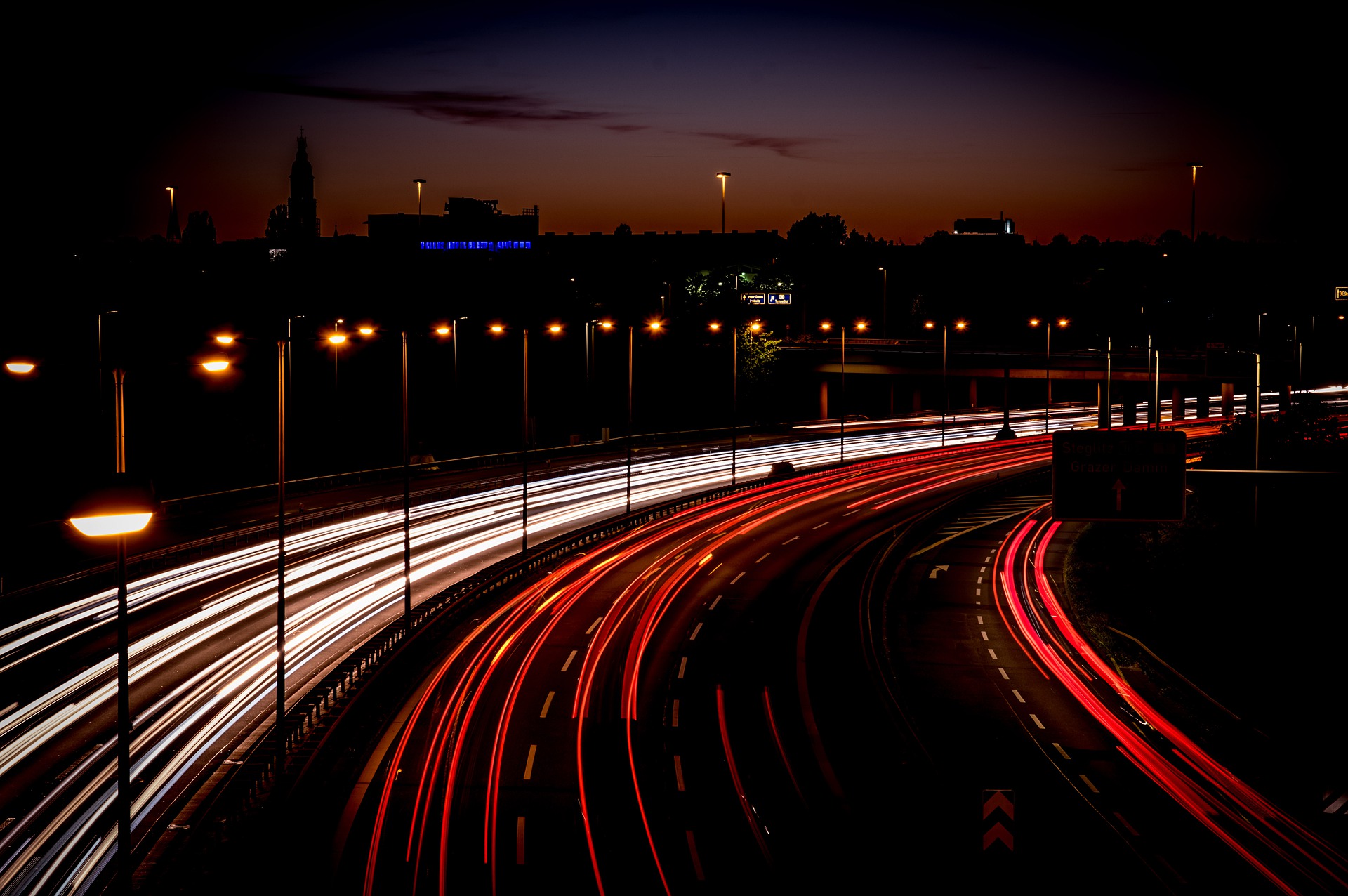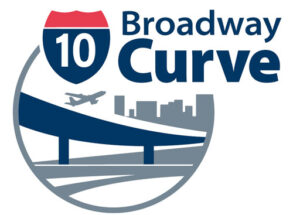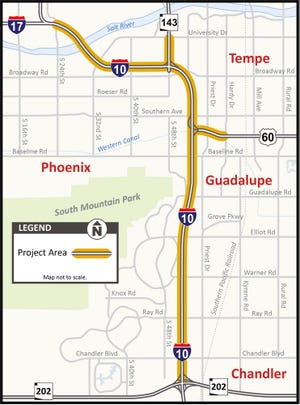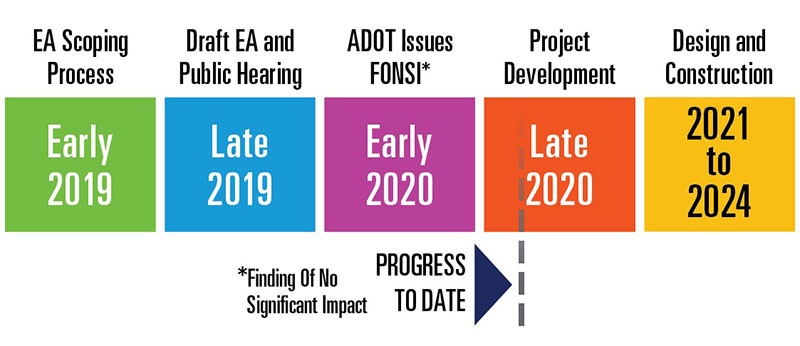
Your hands are seared to your steering wheel. It can’t be more than 114. Traffic is moving about as fast as water down the Salt River in August.
You’re not sure you’re going to get to the airport in time for your flight, or downtown on time for the start of work.
 You’re steamed.
You’re steamed.
You’re on the Broadway Curve at rush hour.
And if you think it’s bad now, it’s going to get worse before it gets better.
And it is going to get better, the Arizona Department of Transportation promises, but it’s going to take about 3½ years.
It won’t be pretty during a $700 million Broadway Curve rebuilding project on Interstate 10 that is to begin next summer, funded in part by Maricopa Association of Government’s Proposition 400, a sales tax that was approved by Maricopa County voters in 2004.
“It’s gonna be a big one,” said Tom Herrmann, a spokesman for ADOT’s Major Projects Group.
The 11-mile reconstruction is along one of the busiest freeway segments in Arizona.
The one place where wheels are turning smoothly is in the project planning room. A contractor has been selected. Negotiations are to be finalized and a contract signed by January.
Provisions are being made to alert affected businesses and drivers of freeway restrictions, closures and alternate routes during construction, which ADOT hopes to complete by fall 2024.
“This is the first major freeway reconstruction project in the Valley where we’re taking what we built years and years ago and preparing it for the future with all the people that continue to move to the Valley,” Herrmann said. “We’re trying to schedule restrictions and closures at nights and weekends to minimize the impact on weekday commuters. Hopefully this won’t be too big of a challenge for folks.
“We have been working for more than a year on that to minimize it.”
Pulice-FNF-Flatiron Joint Venture has been chosen as the preferred developer by representatives of ADOT, Phoenix, Tempe and Maricopa Association of Governments. Key members of the development team include Pulice Construction, Inc., FNF Construction, Inc., Flatiron Constructors, Inc., and T.Y. Lin International.

The Broadway Curve Project, in partnership among ADOT, Federal Highway Administration and Maricopa Association of Governments, begins just south of Ray Road on Interstate 10 and continues north through West Chandler, South Tempe, Ahwatukee and Guadalupe, and then around the curve and west to the I-10 split at Interstate 17 near Phoenix Sky Harbor International Airport.
Along the way, there will be a total rebuild of the interchange at State Route 143 to the airport and alterations on U.S. 60 from Priest Road approaching the I-10 interchange.
The project gets a downtown-Los Angeles freeway twist near U.S. 60 with the debut of collector-distributor lanes for westbound drivers entering or exiting I-10 at Baseline Road, U.S. 60, Broadway Road and State Route 143 that separate local traffic from through traffic. That is designed to reduce congestion on the high-speed through lanes and eliminate tight lane changes on the curve.
Collector-distributor lanes will look and act much like frontage roads.
“But on a frontage road, you would stop every mile,” Herrmann said. “These collector-distributor lanes are freeway lanes, however they are connected to the exits between Baseline and 40th Street. This is new to Arizona. If you’re trying to get on or off at those interchanges, you’ll be driving on the collector-distributor lanes. If you’re going straight through, you stay on standard lanes. The idea is to get local traffic off of the standard lanes.”
The project also includes:
- Adding a fourth general-purpose lane in each direction on I-10 from south of Ray north to U.S. 60 while retaining the HOV lane. Current overpasses at Ray, Warner, Elliot and Guadalupe roads are wide enough to accommodate the additional lane below, according to Herrmann.
“There will be some acquisition of property,” Herrmann said. “We’ve already started that process, however there are no residential properties involved, nobody’s home is in danger.”
Herrmann said there are no plans to create an interchange at Guadalupe Road.
- I-10 will be expanded to six general-purpose lanes and two HOV lanes in each direction from U.S. 60 west to 24th Street. The current I-10 bridges over the Salt River are wide enough to accommodate the additional lanes, according to Herrmann.
- At the State Route 143 interchange, three bridges will be demolished and replaced by five new bridges. Among the new ones are a dedicated HOV-lane bridge over westbound 10 onto northbound 143, a “flyover” bridge from southbound 143 onto southbound 10, and a collector-distributor-lane bridge from northbound 10 onto northbound 143.
The 143 will be expanded to three lanes over the bridge at University, where it currently squeezes down to two lanes. A new bridge will not have to be built there, according to Herrmann.
“We will be adding a lane, but the current structure will work just fine,” he said.
- Three pedestrian bridges over I-10 will be constructed, all of them south of Broadway.
- Modifications to the I-10/U.S. 60 interchange will include improvements on 60 from Priest Road to 10.
“Those are relatively minor, Herrmann said. “We will be adjusting ramps to the distributor-collector lanes, but we will not be tearing things down. We’re not adding lanes there.”

Among the current headaches on the Broadway Curve is the roughly half-mile stretch where U.S. 60 merges onto I-10 westbound lanes and vehicles are changing lanes to the left quickly. That occurs where Sky Harbor-bound traffic on westbound 10 is switching lanes to the right quickly.
It often is like a rolling blender.
“That’s the purpose of the collector-distributor lanes,” Herrmann said. “I’ve driven that. I know what that can be like. This should eliminate that and make it a lot safer by allowing traffic to move a lot smoother because you’re not having to have your head spin around to look at the person changing lanes from the left, and the person changing lanes from the right.”
A trouble spot on westbound U.S. 60 during the afternoon-evening commute will not be addressed directly in the project but should benefit indirectly from it. There are rear-end collisions nearly every afternoon in the dip near Mill Avenue. Drivers can’t see into the dip until they are nearly on top of it. Traffic at freeway speed then must slam on the brakes because traffic is backed up to a standstill from the 10/60 interchange.
“One of the things we hope will happen as we build those collector-distributor lanes and as we add two HOV and six standard lanes on Interstate 10 is it increases capacity,” Herrmann said. “Part of the challenge is congestion on Interstate 10 and that backs up. If we can keep traffic moving on Interstate 10 with added capacity there won’t be as much backup in the area on U.S. 60.
“This will not be a magical cure for congestion. There’s just too much traffic in that area right now, about 300,000 vehicles a day. But what it will do, as the county continues to grow, is this will accommodate that growth. Early on, we hope traffic will be lighter and this will prevent it from becoming gridlock. In the long term, as people continue to move to Chandler, Tempe, Ahwatukee, Mesa and Gilbert and those people are trying to go to work downtown or in other parts of the Valley we think this will be a real strong benefit to those folks.”
Among the benefits expected from the opening of the Loop 202/South Mountain Freeway late last year was reducing traffic on I-10 through the Broadway Curve. However, the COVID-19 pandemic hit shortly after that opening, people began staying home and consequently ADOT does not yet have statistics on how much that has benefitted Broadway Curve traffic, which still hits a standstill during rush hours.
“With the scale of this project, the scope of this project, there will be some discomfort for folks as we’re doing work,” Herrmann said. “This is a long project. This is a very busy area. But the work is very much needed. Our intent is to do everything we can with planning and scheduling closures and restrictions to minimize that discomfort.
“In the end, when this project is complete, drivers will see some real benefit and it will help everybody in the East Valley who comes in on Interstate 10 or U.S. 60 headed toward downtown or the airport. We really think this will be a big boost for those drivers. We just ask them to bear with us as we get there.”
More information on the Broadway Curve Project: azdot.gov.


